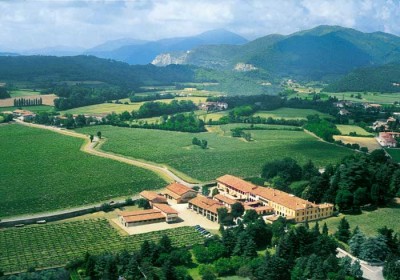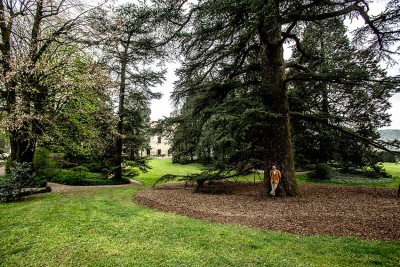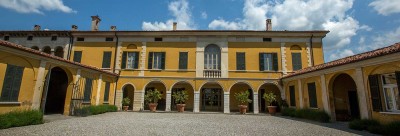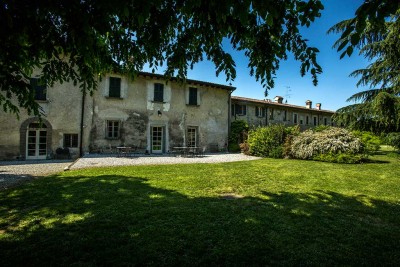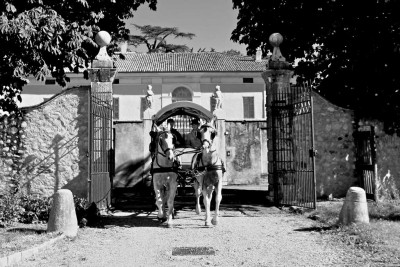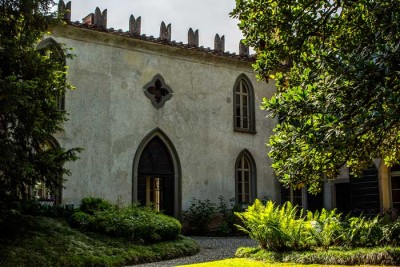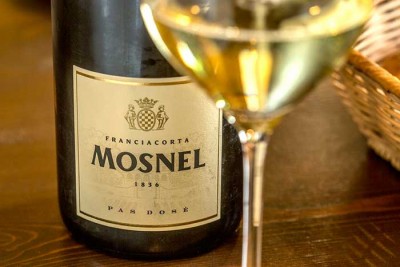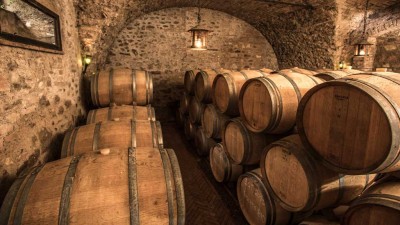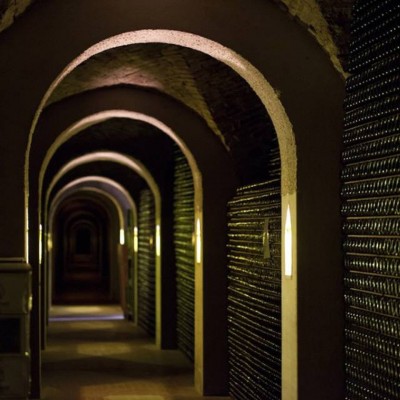Contact the abode
Borgo Mosnel: winery and organic wines in Franciacorta
Borgo Mosnel lies in Camignone di Passirano, in the Contrada Barboglio, the latter area named for the family that inherited the property in 1836.
Entering the area from the west, from the vineyards, one can observe classic examples of 17th- and 18th-century Lombard farmsteads (cascine), which for centuries have been utilised as winecellars, with steel tanks, wood barrels, and rows of Mosnel Franciacortas undergoing bottle-ageing. The agriturism is also to be found here, together with the winery’s hospitality area.
On the left-hand side, proceeding further along the lane, are three Palazzos dating back to the 16th and 17th centuries; two have retained their original architectural design, while the main villa, the residence of the Barboglio family, now Barzanò, has undergone several transformations over the centuries. It acquired its current appearance following radical restorations that were carried out during the neoclassical period and its façade is in fact depicted on the Mosnel Company logo to this day.
Observing the property in detail, it is possible to perceive two 17th-century turrets which were formerly used as a gatehouse and a livery stable, joined together by a high wall. At its centre, one can access the rectangular courtyard from the main entrance gate at no. 6, its pilasters surmounted by two life-sized cherubs in Botticino marble. To the right and left on the east and west sides are two five-arched wings (four of which are covered and have windows) which can be accessed from the central open arch. Further back to the north is the neoclassical villa, characterised by a portico with five main arches as well as a smaller one on the left, again supported by Botticino marble pillars. In correspondence with these aforementioned arches are windows on the first floor, while in the centre there is a large window featuring elegant slender colonnettes also made of the same stone. The third floor (in reality the garret area under the roof) repeats this pattern with lowered windows above those of the first floor. The east side of the villa overlooks a highly concentrated Pinot Noir vineyard that dominates that side of the estate. The main part of the building features five windows on the ground, first and top floors, surmounted by an elegant pigeonhole turret at its centre.
The interior of the villa has a Venetian layout. The dining room is located at the far end of its grand entrance. This entire room has been decorated with an imaginary landscape dating from the early 19th century and overlooks the garden from a large arched French window. On the north extension there is a small two-storey building (formerly for service staff), which is elegantly characterised by tapered ogive windows and a doorway, and crenellations in the eaves in neo-Gothic style. On either side are the living room, sitting room and access to the neoclassical staircase leading to the first floor, with an ornate living room above the main entrance hall and part of the porch below, overlooking the courtyard entrance from the large window. This leads to four bedrooms and another wing of the house, plus the service staircase. The Villa is still inhabited and fully furnished and is not open to the public.
Lying north of the Palazzos is a splendid romantic park covering about two hectares that was designed in the early 1800s around a majestic Lebanese Cedar tree about 40 meters high, which dates back to the era preceding Romantic architecture. Within the gardens, long shingle paths line banks of two-hundred-year-old plants; strolling through them, one can admire numerous varieties of secular species, such as Yews (Taxus Baccata), Himalayan and Lebanese Cedars, Atlantica Glauca Cedar, Beech, Hornbeam and Horse Chestnut trees, as well as individual examples of Libocedron, Lime, Magnolia Stellata and Magnolia Grandiflora. In addition, various different shrubs perfume and colour the garden in every season: Roses, Peonies, Dahlias, Olea Fragrans, Calicantus, Hydrangeas, Laurels, Holm oaks, Chestnut trees and Spireas. Walking amid this pleasant greenery, you will chance upon a 16th-century fountain, an icehouse and a belvedere overlooking the vineyards and our characteristic Pinot Noir vines.
The vast majority of the Mosnel vineyards surround the winery complex, so that it is possible to look out of the window of the loggia and have an overview of most of the vines. In total, Mosnel has 41 hectares of estate vineyards dedicated to DOCG production, subdivided into 18 parcels and all conducted in accordance with organic viticulture. The altitude here is around 250 meters above sea level, practically forming a soft carpet resting on the main morainic soil. The family’s decision to cultivate their vineyards according to organic viticulture stems from a 360-degree sensibility, resulting in a visionary approach that has led Mosnel to consistently implement many other similarly coordinated initiatives.
The history of Borgo Mosnel
Following the Battle of Maclodio in 1427, otherwise known as the Battle of Carmagnola, the regions of Brescia fell definitively under the ruling of ‘la Serenissima Repubblica di Venezia’, the Most Serene Republic of Venice. During that period, patrician families began to construct wine cellars with villas for summertime stays above them, encircled by surrounding wine-cultivating farms of modest dimensions. This was the case of our village, Borgo Mosnel, located in the locality of Camignone and deriving from the place-name Casa minore (ca’ mignon), thus indicating clearly its medieval origin as a monastic settlement of lesser importance, dependent on the nearby Cluniac abbey of Rodengo Saiano. It subsequently evolved from initially being a sixteenth-century Palazzo with a central staircase depicting a fourteenth-century fresco of St. Jerome to becoming a more prominent and extensive seventeenth-century building that underwent considerable renovation work in the neo-classical period.
In 1836, ownership of the property passed from Giovanni Battista Cacciamatta to his adopted daughter Rosina Rosa Cacciamatta, wife of Pietro Paolo Barboglio. The families were associated with the Italian Risorgimento during the period of the unification of Italy: Rosina's brother was Gabriele Rosa, the patriot, writer and follower of the Giovine Italia political movement who was celebrated as a hero of the Resistance after being imprisoned in the Spielberg fortress in 1833.
Giuseppe, the son of Rosina Rosa Cacciamatta and Pietro Paolo Barboglio, participated in Garibaldi's Expedition of the Thousand in 1860. Giuseppe's brother Emanuele married Giovanna Marozzi from Abruzzo, who also came from a patriotic Risorgimento family. Their son, Pietro Barboglio, an engineer, married Mariuccia Diatto, daughter of the automobile industrialists of the Turin factory of the same name. The most recent Barboglio heir is Emanuela, mother of the current Barzanò owners.
Facilities and services at Borgo Mosnel
Franciacorta Wine Tastings
Come and discover how Mosnel Franciacorta wines are produced by experiencing one of our Visits and Tasting Tours.
What we offer:
Guided visits of the cellars, the hamlet and the park, with tastings of our Franciacorta DOCG wines accompanied by a taste of our local cured salamis and cheeses
Cycling and walking tours in the vineyards with the possibility of reserving picnic baskets in advance
Meetings and conferences with a coffee break, and lunch or dinner service
Lunches or dinners for groups of at least 20 people
Themed tasting evenings
Seminars, tasting courses and cooking classes can be arranged upon request
Enotourism and visits to the winery
With prior booking, it is possible to visit the winery, the hamlet and the villa's park with its centuries-old trees, followed by a Mosnel wine tasting accompanied by local specialities. Bicycles and picnic backpacks are available for unaccompanied or guided excursions along the two recommended routes available: the Rose Trail (Percorso delle Rose: 4 km) and the Badger Trail (Percorso del Tasso: 7 km) through the 40 hectares of our organically farmed vineyards.
